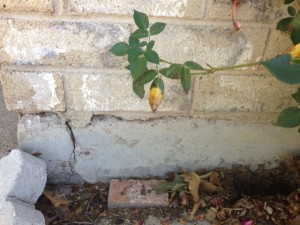It’s wise to find out about concrete slab foundations in Texas. They’ve around for a long time and is the one that over 90% of new homebuilders in the local area use. Unlike pier and beam structures, concrete slabs are poured and rest directly on the ground. That’s an important consideration due to the nature of Texas soil conditions, especially those in the northern part of the state. They’re used a lot for residential and commercial properties and can support a heavy load. You may want to find out about foundation design using concrete slabs and what makes these foundations unique. While they can develop damage, there are several methods of foundation repair that have proven to be highly effective.
Why Use Concrete Slab Foundations In Texas?
One reason is because they’re well suited to the climate in this part of country, especially in North Texas and the Dallas / Fort Worth area. Cold weather and the frost associated with it can negatively affect a concrete slab-on-grade foundation. When a foundation is exposed to ice cold temperatures for extended periods of time, “frost heaving” can occur. This happens when water that seeped beneath the foundation freezes and forces the concrete slab upwards. Since the soil in most parts of Texas doesn’t stay below 32 degrees for long periods of time, and temperatures are generally between 60-90 degrees in this region, slabs manufactured from concrete work and cold weather doesn’t contribute to foundation damage in Texas.
Another reason why it’s common for property owners to choose concrete slab foundations in Texas is because it doesn’t require walking up a bunch of stairs. Some pier and beam houses have 4-10 steep stairs that you have to navigate. Slabs don’t have a crawlspace beneath them either. That means they’re not prone to developing moldy spaces. Keep in mind that when only 1-2″ of water is left standing in crawlspaces, lots of issues can transpire. What’s more, sagging floors aren’t a problem. That’s just a few of the things that people like about concrete slabs. Of course, as is the case with any structure, these surfaces can develop a variety of problems.
How Texas Soils Impact Concrete Slabs?
They affect these foundations by causing foundation movement. That’s due to the fact that expansive soil in certain regions of the state moves when ground conditions go from dry to wet. This is particularly true of clay soils that expand in volume. The motion of the earth has been known to damage concrete slabs. Forms of destruction can include interior and exterior cracks, flooring and countertops that aren’t even, and a whole host of other things. If you see any indications of slab damage, it’s best to have your foundation inspected in order to minimize deterioration. A contractor can quickly determine if you need service or not. In the event you do, it’s wise to consult with a professional who has a great deal of experience performing concrete slab foundation repair in Texas. Because problems in concrete structures can and do multiply, it’s always wise to have yours examined and, if necessary, fixed.

